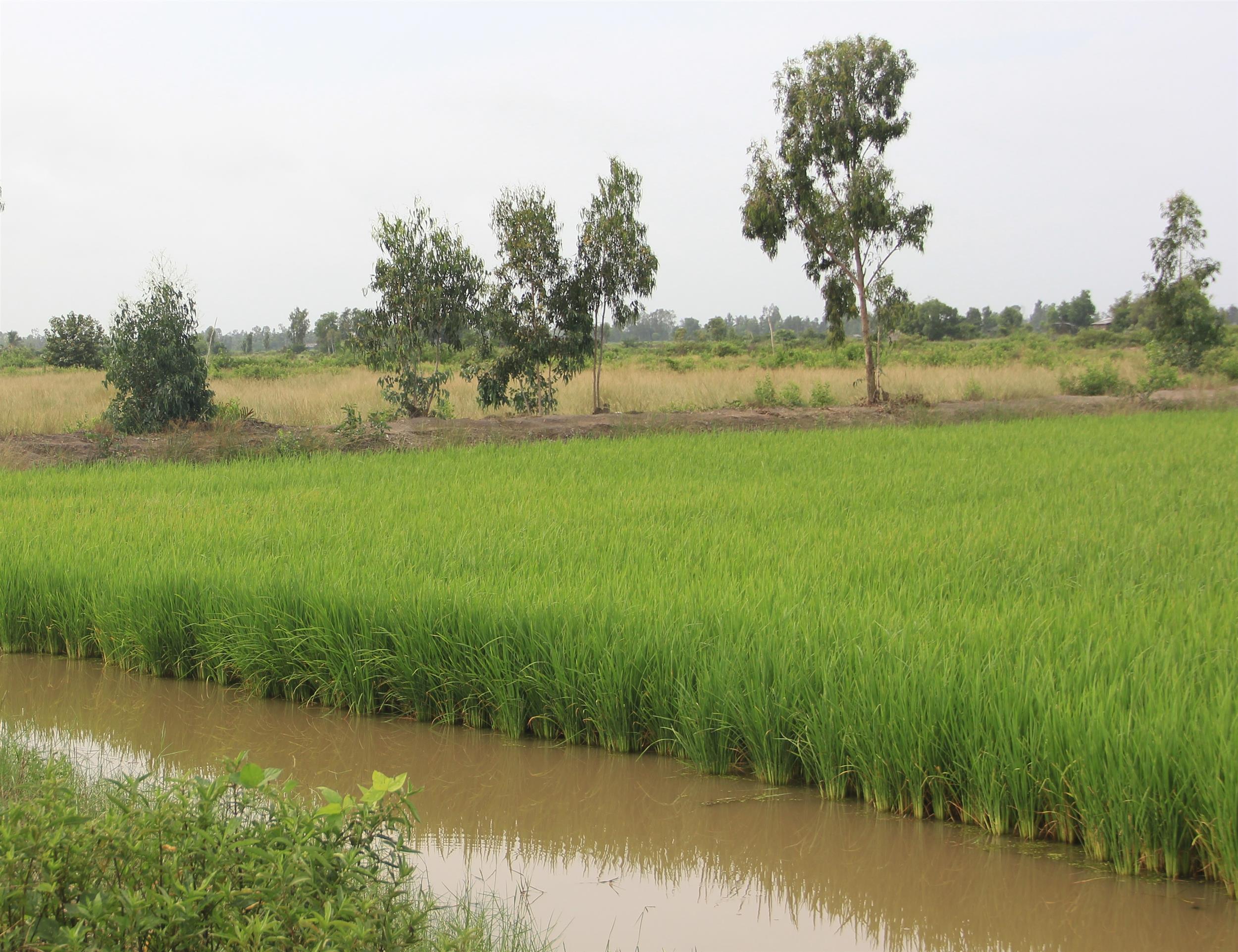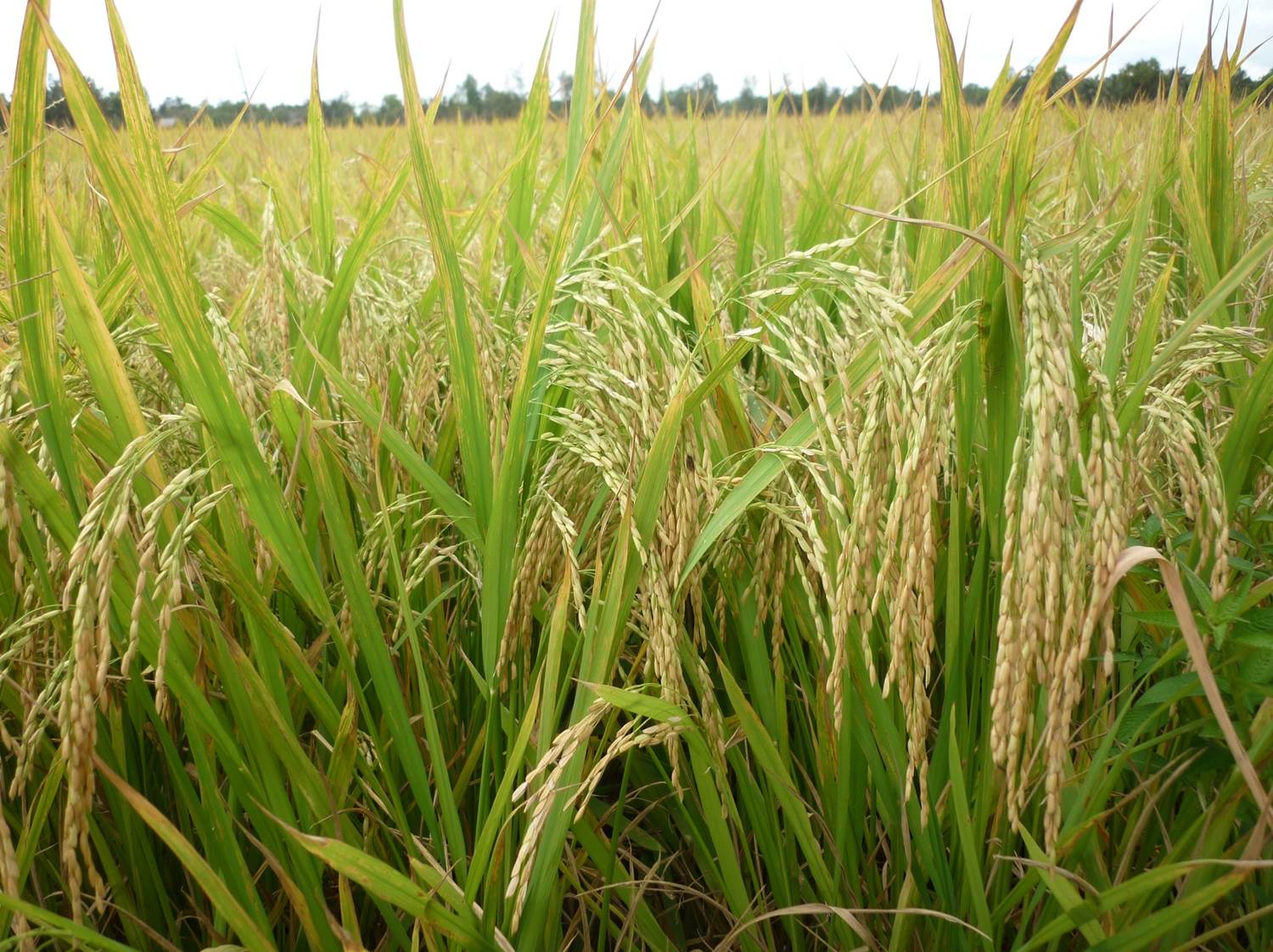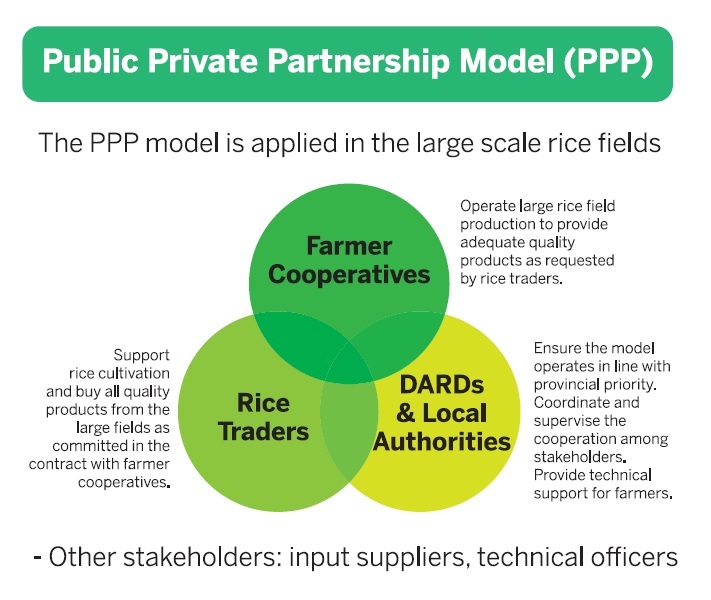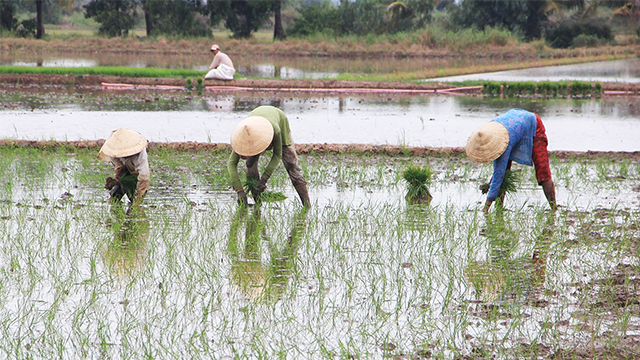Better Rice Initiative Asia (BRIA)’s SMART Approach in Viet Nam
 BRIA Viet Nam is implementing its SMART programme (Sustainable Management of Rice production systems through introduction of improved Technologies) in the provinces of Đong Thap, Hau Giang and Kien Giang. BRIA intends to promote the implementation of the Agricultural Restructuring Plan to improve farmers’ livelihoods in those provinces, promote sustainable development of ecologically resilient rice production systems, enhance market linkages and quality of rice. BRIA works in collaboration with the Government of SR Viet Nam, the Ministry of Agriculture and Rural Development (MARD), the Provincial Department of Agriculture and Rural Development as well as Bayer CropScience.
BRIA Viet Nam is implementing its SMART programme (Sustainable Management of Rice production systems through introduction of improved Technologies) in the provinces of Đong Thap, Hau Giang and Kien Giang. BRIA intends to promote the implementation of the Agricultural Restructuring Plan to improve farmers’ livelihoods in those provinces, promote sustainable development of ecologically resilient rice production systems, enhance market linkages and quality of rice. BRIA works in collaboration with the Government of SR Viet Nam, the Ministry of Agriculture and Rural Development (MARD), the Provincial Department of Agriculture and Rural Development as well as Bayer CropScience.
1. At least 3,000 rice farmers in the three provinces apply recommended successfully tested smart rice cultivation systems.
2. Developed concepts for smart rice cultivation systems show 20% gross margin increase through enhanced productivity and/or reduced application of agricultural inputs compared to farmers’ current practice.
3. Suitable and appropriate rice standards for quality markets have been developed and officially approved.
4. At least 270 tons of high quality rice (according to the new rice standard) were produced in each of the three provinces.
5. Concepts for the successful implementation of public-private-partnership projects have been developed and submitted to MARD.
 BRIA Viet Nam has completed a baseline survey to collect initial information and identify the current difficulties faced and support needed by farmer cooperatives, farmer groups and rice producers targeted in the implementation of a large-scale rice field (LSRF) based PPP (Public-Private Partnership) model. The sample was 300 rice producer households (HHs) in Dong Thap, Hau Giang, and Kien Giang Provinces.
BRIA Viet Nam has completed a baseline survey to collect initial information and identify the current difficulties faced and support needed by farmer cooperatives, farmer groups and rice producers targeted in the implementation of a large-scale rice field (LSRF) based PPP (Public-Private Partnership) model. The sample was 300 rice producer households (HHs) in Dong Thap, Hau Giang, and Kien Giang Provinces.
The evaluation covered two rice crops including Winter/Spring 2014-2015 and Summer/Autumn 2015. The results were based on a direct survey of the 300 HHs (100 HHs in each province), in-depth interviews, meetings with public agencies related to rice production in the three provinces. This baseline study was conducted by IPSARD (Institute of Policy and Strategy on Agriculture and Rural Development). The baseline information will be used for mid-term and end-of-project evaluations.
BRIA cooperated with IPSARD to develop a PPP model in rice farming to be piloted in the 3 provinces. The model is applied in LSRFs, which are planned and approved by Provincial Departments of Agriculture and Rural Development (DARDs). The objectives are to improve rice quality and farmers’ income, promote market linkages and enhance the capacity of farmer cooperatives in the LSRF areas. Three key stakeholders have been identified as key elements to form an essential linkage in the PPP model. DARDs, local authorities and Public Extension Service are public stakeholders while farmer cooperatives, farmer groups, rice traders, rice millers and input suppliers are private stakeholders.

This value chain-based model, which will link production of quality rice to sales, has the following characteristics:
- Farmers produce rice in the large-scale field using the same rice seeds and following the same technical process of cultivation.
- Paddy output is purchased by enterprises.
- Farmers are trained and apply sustainable rice planting practice to increase incomes, reduce environmental pollution and maintain the health of the producers themselves and the community.
- Farmers produce high quality paddy with certificates.
- This model will be implemented in two years in the Winter/Spring rice crop 2015 – 2016 and end in the Autumn/Winter crop 2017.
In implementing this model, BRIA provides the following support:
- Support farmers to use certified high quality rice seeds.
- Train and provide guidance to farmers in the application of technical process of sustainable rice cultivation.
- Support linkages from production to sale of rice between enterprises and farmers.
- Support farmer cooperatives to provide more services to members.
BRIA’s pilot model promotes market linkages based on Public-Private Partnership by providing mechanisms for linking value chain actors and coordinating them along the rice value chain. To implement the model, BRIA proposes the following roles and responsibilities of all the stakeholders including the public and private sectors, farmer cooperatives (FC) and farmers:
| DARD | Ensure that the PPP models are applied in the LSRF. |
• Sign the PPP MoU with Traders/ Millers and/ or FC. • Approve the LSRF area. • Coordinate and supervise the activities of stakeholders in the PPP models. • Support the process of applying certification (if any). |
| Local authorities |
Ensure good cooperation among stakeholders in their local areas. |
• Plan the area of LSRF. • Encourage farmers to join cooperatives and LSRF. • Support field monitoring and technical instructions for farmers. • Supervise and control the implementation of the contract between Traders and FC. |
| Public Extension Service |
Ensure that good farming practices are applied to achieve high yield and quality. |
• Participate in the technical support groups of FC. • Provide technical support and field monitoring in the LSRF. • Make sure that the technical procedure applied in the PPP model is aligned with DARD guidelines. |
| Farmer Cooperatives |
Ensure that rice is produced with good yield and quality to meet the requirements of Traders/ Millers according to the contract. |
• Sign the contract with Traders/ Millers. • Distribute agricultural inputs for members. • Organize the production in the LSRF. • Provide technical support for members through the technical support group and agriculture services. • Deal with payment for traders, input suppliers and members. • Participate in the registration of certification systems (if any). |
| Traders/ Millers |
Ensure that all rice produced as requirements is purchased. Contribute to stabilizing the local rice market and farmers’ income. |
• Sign the contract with farmers on purchasing paddy. • Cooperate with input suppliers to provide inputs for farmers. • Suggest the rice quality, certification system and the technical procedure applied on the rice fields. • Cooperate with Extension Service to provide technical support for farmers. |
| Input suppliers |
Ensure that high quality agricultural inputs is provided to farmers. |
• Sign the contract with Traders or with FC to provide high quality inputs for farmers. |
Trainings of Trainers (ToT)[/fusion_title][fusion_text]BRIA organized its first Training of Trainers (ToT) that lasted 6 days in total in three provinces in the Mekong Delta from 3 -11 November 2015. Participants were local technical staff and farmer group leaders who participate in the three LSRF-based PPP models BRIA implements in these three provinces.
The BRIA ToT series consists of four training sessions designed with respect to the growth & development stages of rice plants. Mr. Mai Thanh Phung, an expert in agricultural extension, and team members from Can Tho University and Southern Crop Production Department were invited to work with agricultural technicians in the three provinces to develop training courses and deliver TOT trainings.
| 1st training: 15- 20 days before sowing (DBS) | 3rd training: 30 – 35 DAS |
|---|---|
| • Overview of climate change • Overview of 1 must – 6 reductions principle in rice farming • Land preparation, weed & snail control, reduction of greenhouse gas emissions • Seed selection & treatment • Seed sowing, 1 must reduction – Light effect and rice plants • Fertilization, integrated nutrition management • Integrated Pest Management • Water saving • Harvest & postharvest • Guidance on field diary |
• Water management, 30 DAS • Nutrition management for panicle initiation • Pest & disease management from panicle initiation stage to maturity stage • Weed & golden snail control, 30 DAS • Identification of main natural enemies and diseases • Keeping track of field/diary note-taking |
| 2nd training: 10 – 15 days after sowing (DAS) | 4th training: 50 – 55 DAS |
| • Weed control after sowing, identification of weeds in rice fields • Pest & disease management, 10 – 40 DAS, natural enemy protection • FPR, ecological technique • Water management, 10 – 40 DAS, Alternate Wetting and Drying • Nutrition management, 10 – 40 DAS • Keeping track of field/diary note-taking, guidance on cost–benefit calculation |
• Water management, 50 DAS • Nutrition management for maturation • Pest & disease management from heading to maturity stages • Harvesting • Postharvest (transporting, drying, storing) • Seed preservation • Evaluation of rice yield • Keeping field diary |
After training, the local technical staff will transfer their knowledge to all farmers in the PPP models while farmer group leaders are expected to support the technical staff and supervise trained farmers to apply trained techniques in the fields. Farmer training has been planned for the Winter/Spring 2015-2016 season.

The Sub Plant Protection Departments of three provinces together with the Southern Regional Plant Protection Centre of the Plant Protection Department supported by GIZ and Croplife International, seek to strengthen knowledge and skills of government extension staff members, farmers and pesticide retailers on Integrated Pest Management (IPM). As a component of BRIA Viet Nam, the IPM project consists of two main activities: Training of Trainers (ToT) and direct training of farmers and retailers. In the ToT completed earlier last year, 39 plant protection staff members were trained in IPM technical knowledge and application skills. These specialists will serve as Master Trainers for both the training of farmers and retailers during the next rice growing seasons.
The first Direct Farmer Training started in November 2015 to January 2016, for testing the training contents developed during the formation of Master Trainers. The training curriculum for farmers is based on 12 modules corresponding to the rice growth stages. The first group of 210 farmers was trained in 12 weekly lessons during the rice cropping season.
GIZ, Croplife International together with Plant Protection Department will continue to conduct training for over 1,000 farmers in the Summer/Autumn and the Autumn/Winter seasons in 2016. Additionally, the directly trained farmers are expected to share their knowledge with other farmers in their neighborhood, and with families and friends.
The training for retailers is being organized between two rice growing seasons. It consists of 8 modules with specific information for retailers. Thus, they would be enabled to provide proper advice to their farmer customers.
By Kamol Taukitphaisarn, BRIA Communication, BRIA

